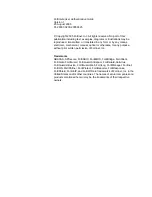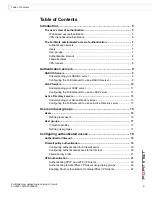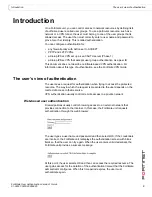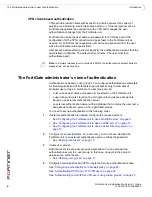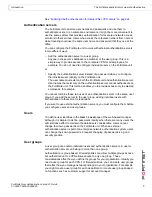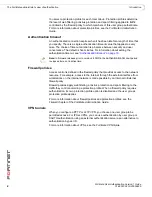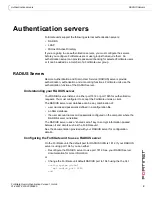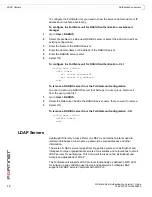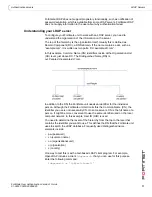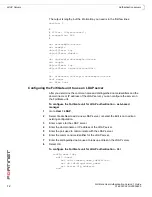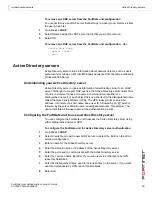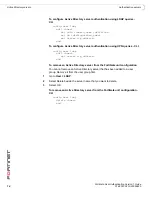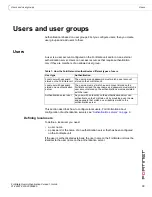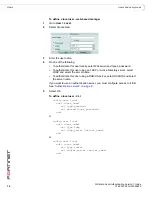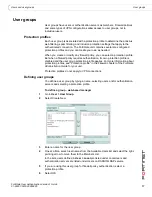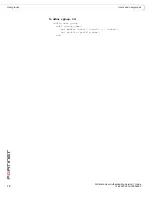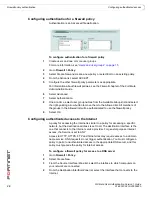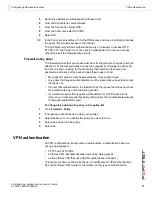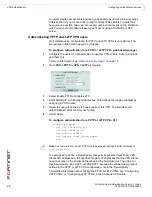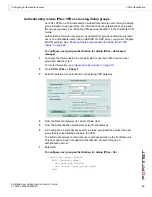
FortiGate User Authentication Version 1 Guide
8
01-28007-0233-20050825
The FortiGate administrator’s view of authentication
Introduction
You select a protection profile for each User Group. Protection profiles determine
the level of web filtering, antivirus protection and spam filtering applied to traffic
controlled by the firewall policy to which members of this user group authenticate.
For more information about protection profiles, see the
FortiGate Administration
Guide
.
Authentication timeout
An authenticated connection expires when it has been idle for a length of time that
you specify. There is a single authentication timeout value that applies to every
case. The choice of timeout duration is a balance between security and user
convenience. The default is five minutes. For information about setting the
authentication timeout, see
“Authentication timeout” on page 19
.
Firewall policies
Access control is defined in the firewall policy that provides access to the network
resource. For example, access to the Internet through the external interface from
workstations on the internal network is made possible by an Internal to External
firewall policy.
Firewall policies apply web filtering, antivirus protection and spam filtering to the
traffic they control according a protection profile. When a firewall policy requires
authentication, its own protection profile option is disabled and the user group’s
protection profile applies.
For more information about firewall policies and protection profiles, see the
Firewall chapter of the
FortiGate Administration Guide
.
VPN tunnels
When you configure a PPTP or L2TP VPN, you choose one user group to be
permitted access. For IPSec VPNs, you can use authentication by user group or
XAUTH authentication using an external authentication server as an alternative to
authentication by peer ID.
For more information about VPNs, see the
FortiGate VPN Guide
.
Note:
In firmware releases prior to version 2.80 MR6, the
authentication timeout
period
is elapsed time, not inactive time.


